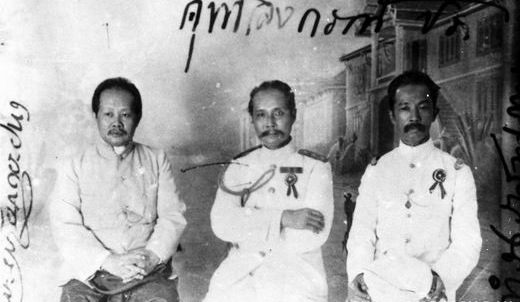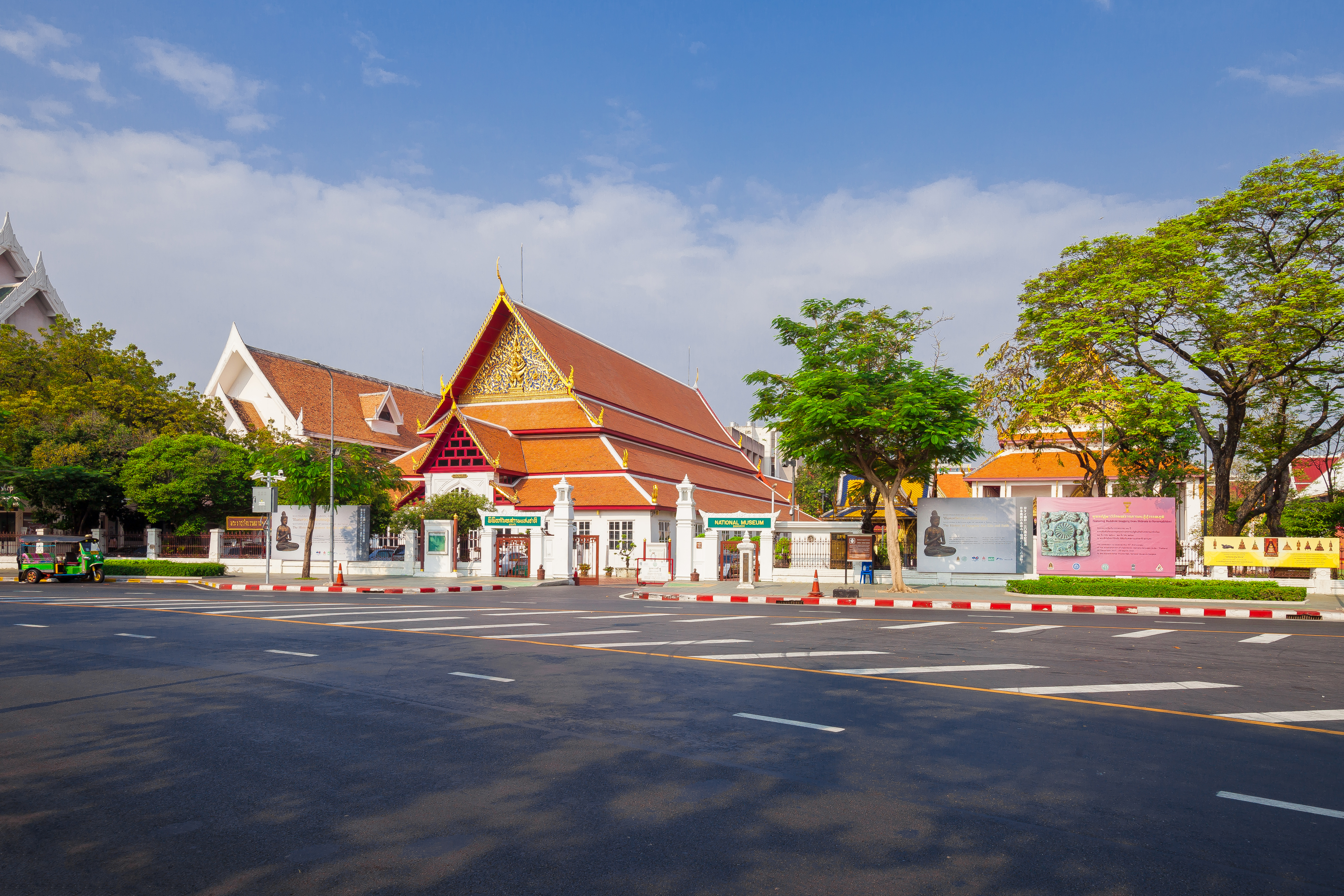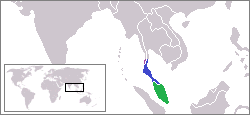|
Wat Phra Sing
Wat Phra Singh (full name: Wat Phra Singh Woramahaviharn; th, วัดพระสิงห์วรมหาวิหาร; ;pronunciation; nod, ) is a Buddhist temple ( Thai language: Wat) in Chiang Mai, northern Thailand. King Ananda Mahidol (Rama VIII), bestowed upon it the status of Royal temple of the first grade in 1935. Location Wat Phra Singh is located in the western part of the old city centre of Chiang Mai, which is contained within the city walls and moat. The main entrance is guarded by '' Singhs'' (lions). Wat Pra Singh is situated at the end of the main street (Rachadamnoen road) of Chiang Mai. The road runs east from the temple, via Tapae Gate, to the Ping River. Name Phra Singh is an abbreviated form of Phra-Put-Tha-Shi-Hing and does not refer to the word Singh ("lion"). Notability The temple houses an important Buddha statue: the ''Phra Buddha Sihing'' which gives the temple its name. The origins of this statue are unknown but, according to ... [...More Info...] [...Related Items...] OR: [Wikipedia] [Google] [Baidu] |
Shakya
Shakya (Pali, Pāḷi: ; sa, शाक्य, translit=Śākya) was an ancient eastern Sub-Himalayan Range, sub-Himalayan ethnicity and clan of north-eastern region of the Indian subcontinent, whose existence is attested during the Iron Age in India, Iron Age. The Shakyas were organised into a Gaṇasaṅgha, (an Aristocracy, aristocratic Oligarchy, oligarchic republic), also known as the Shakya Republic. The Shakyas were on the periphery, both geographically and culturally, of the eastern Gangetic plain in the Greater Magadha cultural region. Location The Shakyas lived along the foothills of the Himalayas, Himālaya mountains, with their neighbours to the west and south being the kingdom of Kosala, their neighbours to the east across the Rohni River, Rohiṇī river being the related Koliya tribe, while on the north-east they bordered on the Malla (tribe), Mallakas of Kusinārā. To the north, the territory of the Shakyas stretched into the Himālayas until the forested regi ... [...More Info...] [...Related Items...] OR: [Wikipedia] [Google] [Baidu] |
Mangrai
Mangrai ( nod, ; th, มังราย; 1238–1311), also known as Mengrai ( th, เม็งราย),The name according to historical sources is "Mangrai", and this is used in most modern scholarly applications. "Mengrai", popularised by a 1907 publication, is commonly found in popular usage. was the 25th king of Ngoenyang (r. 1261–1292) and the first king of Lanna (r. 1292–1311). He established a new city, Chiang Mai, as the capital of the Lanna Kingdom (1296–1558).Wyatt, D. K. Thailand, A Short History, p. 35–38, Bangkok 2003 Early years King Mangrai was born on October 23, 1238 in Ngoen Yang (present day Chiang Saen) Thailand on the Mekong River, a son of the local ruler Lao Meng and his wife Ua Ming Chom Mueang, a princess from the Tai Lue city of Chiang Rung, which is now called Jinghong, in Sipsongpanna (Xishuangbanna), China. In 1259, Mangrai succeeded his father to become the first independent king of the unified Tai city states in northern Lanna and what is ... [...More Info...] [...Related Items...] OR: [Wikipedia] [Google] [Baidu] |
Procession
A procession is an organized body of people walking in a formal or ceremonial manner. History Processions have in all peoples and at all times been a natural form of public celebration, as forming an orderly and impressive ceremony. Religious and triumphal processions are abundantly illustrated by ancient monuments, e.g. the religious processions of Egypt, those illustrated by the rock-carvings of Boghaz-Keui, the many representations of processions in Greek art, culminating in the great Panathenaic procession of the Parthenon Frieze, and Roman triumphal reliefs, such as those of the arch of Titus. Greco-Roman practice Processions played a prominent part in the great festivals of Greece, where they were always religious in character. The games were either opened or accompanied by more or less elaborate processions and sacrifices, while processions from the earliest times formed part of the worship of the old nature gods, as those connected with the cult of Dionysus and the Ph ... [...More Info...] [...Related Items...] OR: [Wikipedia] [Google] [Baidu] |
Songkran (Thailand)
Songkran ( th, เทศกาลสงกรานต์, ) is the Thai New Year's national holiday. Songkran is on 13 April every year, but the holiday period extends from 14 to 15 April. In 2018 the Thai cabinet extended the festival nationwide to five days, 12–16 April, to enable citizens to travel home for the holiday. In 2019, the holiday was observed 12–16 April as 13 April fell on a Saturday. The word "Songkran" comes from the Sanskrit word ', literally "astrological passage", meaning transformation or change. It coincides with the rising of Aries on the astrological chart and with the New Year of many calendars of South and Southeast Asia, in keeping with the Hindu Calendar and Buddhist calendar. The New Year takes place at virtually the same time as the new year celebrations of many countries in South Asia like Bangladesh, Cambodia, China (Dai People of Yunnan Province), India (Baisakhi in Punjab, Bengal Gajan Utsav, Bengal Charak Utsav, Bengali New Year (Poy ... [...More Info...] [...Related Items...] OR: [Wikipedia] [Google] [Baidu] |
Damrong Rajanubhab
Prince Tisavarakumarn, the Prince Damrong Rajanubhab (Thai: ; Full transcription is "Somdet Phrachao Borommawongthoe Phra-ongchao Ditsawarakuman Kromphraya Damrongrachanuphap" (สมเด็จพระเจ้าบรมวงศ์เธอ พระองค์เจ้าดิศวรกุมาร กรมพระยาดำรงราชานุภาพ)) (21 June 1862 – 1 December 1943) was the founder of the modern Thai educational system as well as the modern provincial administration. He was an autodidact, a (self-taught) historian, and one of the most influential Thai intellectuals of his time. Born as ''Phra Ong Chao Tisavarakumarn'' (พระองค์เจ้าดิศวรกุมาร; "Prince Tisavarakumarn"), a son of King Mongkut with Consort Chum (เจ้าจอมมารดาชุ่ม; Chao Chom Manda Chum), a lesser royal wife; he initially learned Thai and Pali from private tutors, and English at the Royal School with Mr. F ... [...More Info...] [...Related Items...] OR: [Wikipedia] [Google] [Baidu] |
Bangkok National Museum
The Bangkok National Museum ( th, พิพิธภัณฑสถานแห่งชาติ พระนคร, ) is the main branch museum of the National Museums in Thailand and also one of the largest museums in Southeast Asia. It features exhibits of Thai art and history. It occupies the former palace of the vice king (or Front Palace), set between Thammasat University and the National Theater, facing Sanam Luang. The museum was established and opened in 1874 by King Chulalongkorn to exhibit the royal collections of his father King Mongkut. Today the galleries contain exhibits covering the Thai History back to Neolithic times. The collection includes The King Ram Khamhaeng's Inscription, which was inscribed on UNESCO's Memory of the World Programme registered in 2003 in recognition of its significance. Other than preserving and displaying Thai artifacts dating from the Dvaravati, Srivijaya, to Sukhothai and Ayutthaya periods, the museum also displays extensive col ... [...More Info...] [...Related Items...] OR: [Wikipedia] [Google] [Baidu] |
Phra Phuttha Sihing
The Phra Phuttha Sihing ( th, พระพุทธสิหิงค์) is a highly revered image of the Gautama Buddha in Bangkok, Thailand, second in importance only after the Emerald Buddha. The image is currently housed at the Phutthaisawan Hall (formerly a part of the Front Palace), now the Bangkok National Museum. The image was brought to Bangkok from Wat Phra Singh, Chiang Mai in 1795 by Viceroy Maha Sura Singhanat, the brother of King Rama I. History The exact provenance of the Phra Phuttha Sihing image is still in question. The name ''Sihing'' comes from '' Sinhala'' the name of several kingdoms in Sri Lanka. According to legend the Phra Phuttha Sihing image was created in Sri Lanka around 157 A.D. and was brought to Thailand in 1307 to Sukhothai. Later it was relocated to Phitsanulok, Ayutthaya in 1378, Kamphaeng Phet in 1382 and Chiang Rai in 1388, before it was brought back to Ayutthaya again and then back to Chiang Mai in 1407, where it was enshrined at Wat Phra Sin ... [...More Info...] [...Related Items...] OR: [Wikipedia] [Google] [Baidu] |
Wat Phra Mahathat
Wat Phra Mahathat Woramahawihan ( th, วัดพระมหาธาตุวรมหาวิหาร) is the main Buddhist temple (wat) of Nakhon Si Thammarat Province in southern Thailand. The main stupa of the temple, Phra Borommathat Chedi ('great noble relics stupa'), was built by King Sri Dhammasokaraja in the early-13th century CE to establish a symbol for the Theravada Buddhism sect in the province. The temple is believed to house a tooth of Gautama Buddha. History According to legend, Prince Thanakuman and Princess Hem Chala brought the relic of Buddha to Hat Sai Kaew and built a small pagoda in 291 CE. When King Si-Thamma Sokarat established the city of Nakhon Si Thammarat, he built a new temple called Wat Phra Borom That on the same site in the Mahayana-style of the ruling Srivijaya Kingdom. The city of Nakhon Si Thammarat was a prominent city in the ancient kingdom of Tambralinga. The city was a part of the Srivijaya empire till the early-13th century. His ... [...More Info...] [...Related Items...] OR: [Wikipedia] [Google] [Baidu] |
Ayutthaya Kingdom
The Ayutthaya Kingdom (; th, อยุธยา, , IAST: or , ) was a Siamese kingdom that existed in Southeast Asia from 1351 to 1767, centered around the city of Ayutthaya, in Siam, or present-day Thailand. The Ayutthaya Kingdom is considered to be the precursor of modern Thailand and its developments are an important part of the History of Thailand. The Ayutthaya Kingdom emerged from the mandala of city-states on the Lower Chao Phraya Valley in the late fourteenth century during the decline of the Khmer Empire. After a century of territorial expansions, Ayutthaya became centralized and rose as a major power in Southeast Asia. Ayutthaya faced invasions from the Toungoo dynasty of Burma, starting a centuries' old rivalry between the two regional powers, resulting in the First Fall of Ayutthaya in 1569. However, Naresuan ( 1590–1605) freed Ayutthaya from brief Burmese rule and expanded Ayutthaya militarily. By 1600, the kingdom's vassals included some city-states in the M ... [...More Info...] [...Related Items...] OR: [Wikipedia] [Google] [Baidu] |
Nakhon Si Thammarat
Nakhon Si Thammarat Municipality ( th, เทศบาลนครนครศรีธรรมราช, ; from Pali ''Nagara Sri Dhammaraja'') is a municipality (''thesaban nakhon'') in Southern Thailand, capital of Nakhon Si Thammarat province and Mueang Nakhon Si Thammarat district. It is about south of Bangkok, on the east coast of the Malay Peninsula. The city was the administrative center of southern Thailand during most of its history. Originally a coastal city, silting moved the coastline away from the city. The city has a much larger north to south extension than west to east, which dates back to its original location on a flood-save dune. The modern city centre on the train station is north of Old Town. As of 2019, the city had a population of 102,152. Toponymy Thai honorific ''Sri'' or ''Si'' is from Sanskrit Sri; , from Dharma; , from Raja. ''Dhammaraja'' means "righteous ruler", an important Theravada concept. History Nakhon Si Thammarat is one of the oldes ... [...More Info...] [...Related Items...] OR: [Wikipedia] [Google] [Baidu] |



.jpg)


_of_Wat_Phra_Si_Sanphet.jpg)
